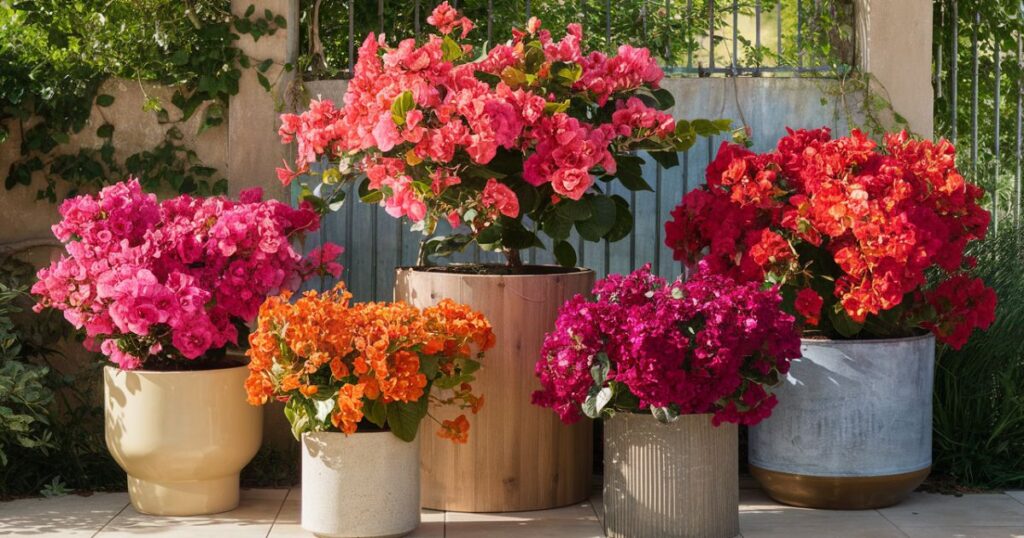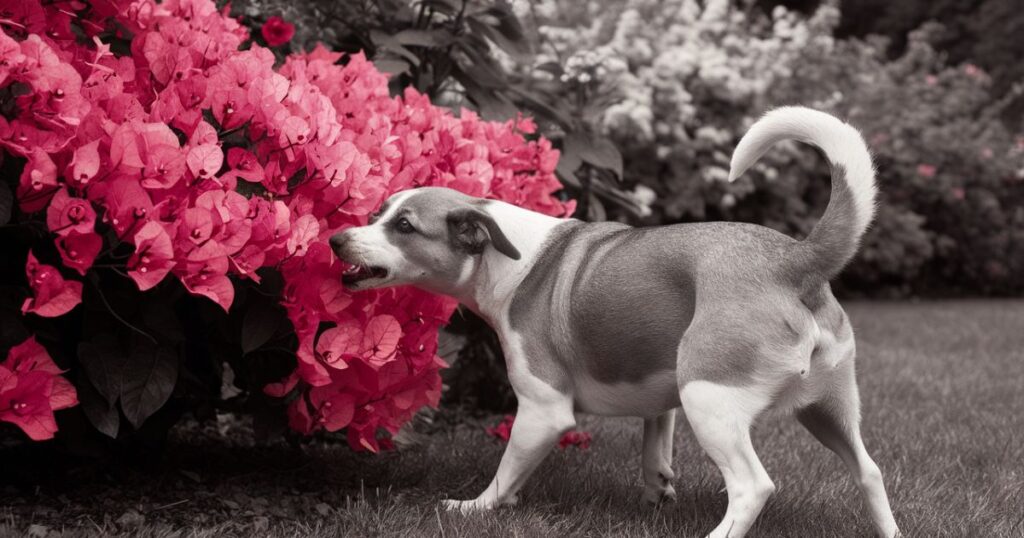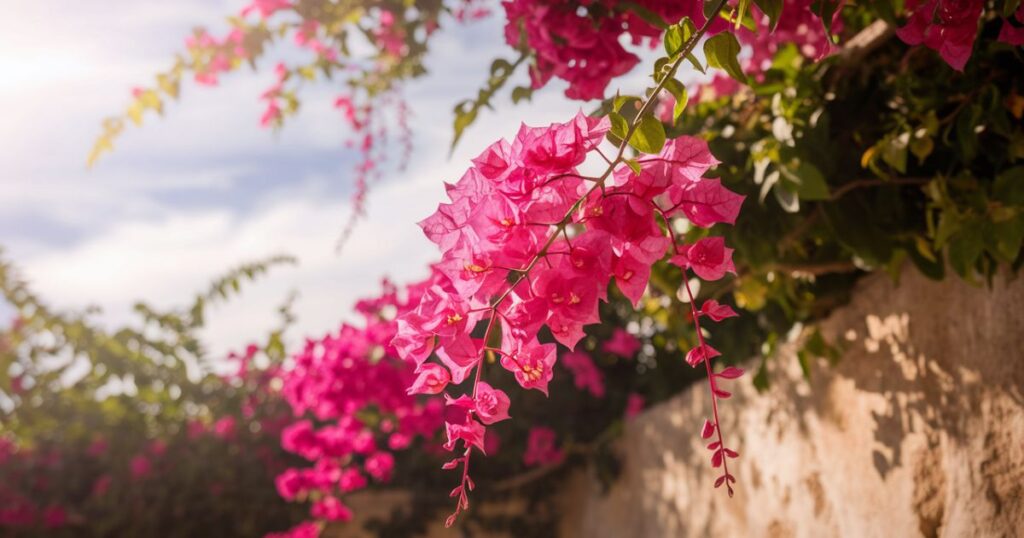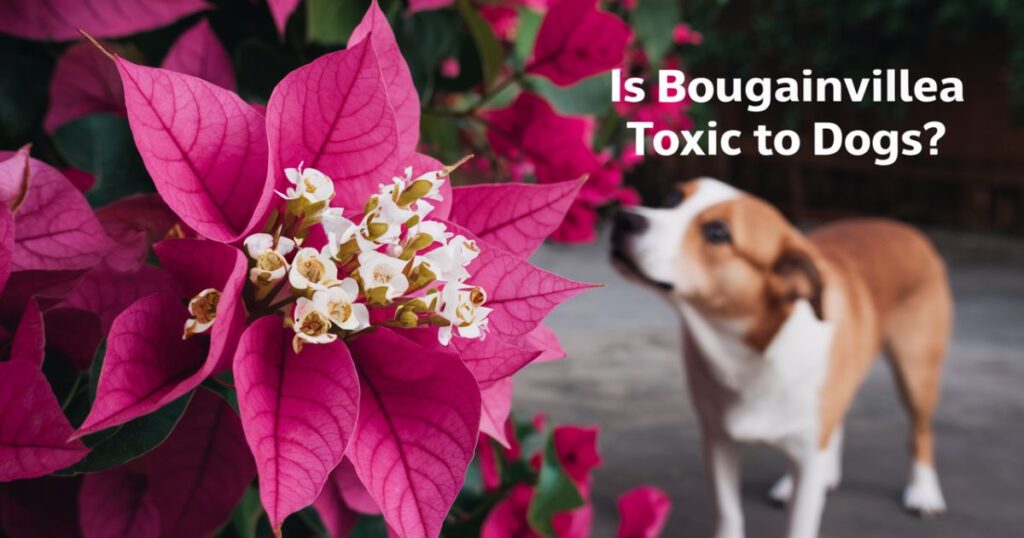As dog lovers, one of our biggest concerns is ensuring our furry companions remain safe and healthy. With bougainvillea’s vibrant hues adorning countless backyards, it’s natural to wonder:
is bougainvillea toxic to dogs? This comprehensive guide aims to unravel the mystery, providing pet owners with vital information to keep their four-legged pals out of harm’s way.
Unraveling the Mystery: Is Bougainvillea Poisonous to Dogs?
While the striking beauty of bougainvillea may be tempting for our canine friends to investigate, it’s crucial to understand the potential risks. Scientifically speaking, bougainvillea contains certain compounds that can be irritating to dogs if ingested.
Although not deadly, the plant’s sap can trigger mild symptoms like an upset stomach or excessive drooling. It’s important to note that every dog may react differently. Some may simply nibble and carry on, while others might exhibit a more pronounced reaction.
Factors like the amount consumed, the dog’s size, and individual sensitivity can all play a role. Nonetheless, being informed and taking preventative measures is key to ensuring your pup’s well-being.
By understanding the potential hazards and recognizing the signs, you can take appropriate action to safeguard your furry friend’s health and wellness.
5 Types of Bougainvilleas for Containers

With hundreds of bougainvillea varieties to choose from, it can be tough to pick the perfect one for your container garden. Here are some top choices well-suited for pots:
Read More : Are Orbeez Toxic To Dogs? Vital Safety Facts Revealed!
Barbara Karst
One of the most popular bougainvilleas for good reason – Barbara Karst produces masses of deep magenta and red bracts surrounding white flowers. It’s a vigorous climber that can reach 20 feet if left un-pruned.
Growing Zones: 9-12
Camarillo Fiesta
If blazing hot summers are the norm where you live, Camarillo Fiesta is an excellent choice. This fast-growing vine thrives in sweltering zone 11+ heat, producing gaudy hot pink and gold bracts up to 30 feet long.
Growing Zones: 11+
Gold Rush
As the name suggests, Gold Rush bougainvilleas flaunt stunning golden bracts. Their warm, sunny coloring brightens up any setting. This versatile variety grows 15 feet tall and blooms repeatedly from spring to fall.
Growing Zones: 10-12
Cherry Blossom
For a softer, more romantic look, consider Cherry Blossom bougainvilleas. Their delicate pale pink bracts with white centers resemble the famed Japanese cherry trees. This compact grower tops out at 3 feet, making it ideal for hanging baskets.
Growing Zones: 9-11
White Stripe
Want to add some elegant contrast to your garden? White Stripe bougainvillea produces round white variegated bracts in late spring to early fall. Its sprawling, cascading habit makes it perfect for spilling over large containers.
Growing Zones: 11+
Toxicity

Bougainvillea not toxic to dogs, but can cause skin irritation and gastrointestinal upset. Watch for vomiting, diarrhea, fatigue; contact vet if symptoms are severe or persistent. Prevent ingestion with smart gardening and training dogs to avoid the plant.
Pests & Problems
Bougainvilleas are generally resilient, but they can occasionally fall victim to common plant pests or diseases.
Common Pests:
- Dog
- Aphids
- Spider mites
- Mealybugs
- Whiteflies
- Thrips
Diseases:
- Root rot (from overwatering)
- Leaf spots or blights
- Nutrient deficiencies
To avoid or get rid of pests and diseases, make sure to provide proper cultural conditions like ample sunlight and controlled watering. You can use insecticidal soaps, neem oil, or other organic sprays to treat insect infestations.
Recognizing Bougainvillea: Don’t Let Its Beauty Deceive You

Bougainvillea is a true showstopper in the plant world. Its vibrant bracts, often mistaken for flowers, come in a stunning array of colors – from passionate pinks to radiant reds.
These papery wonders overshadow the plant’s actual flowers, which are tiny and white, nestled at the center. The green, heart-shaped leaves provide a beautiful contrast to the colorful bracts, making bougainvillea a popular choice for many gardens.
This vegetation’s sprawling nature and thorny, woody vines serve as a reminder that its allure can be deceiving. While bougainvillea may light up our outdoor spaces, it’s not the most suitable snack for our canine companions.
If your dog gets a little too curious and takes a bite, they might end up with more than they bargained for – signs like excessive drooling or an upset belly.
Safeguarding Your Furry Friend: Prevention Tips
Gardening with a furry friend by your side can be a delightful experience, but when it comes to plants like bougainvillea, a little extra caution is necessary. Here are some prevention tips to keep your garden both stunning and safe:
- Location, Location, Location: Consider planting bougainvillea in areas that are less frequented by your dog. Raised beds or pots that are out of reach can be excellent options.
- Barrier Methods: Install a small fence or barrier around your bougainvillea plants. Not only does this add a design element, but it also serves as a physical deterrent for curious pups.
- Training Time: A well-trained dog is a gardener’s best friend. Teach them the “leave it” command, which can be a game-changer when it comes to steering clear of potentially harmful plants.
If, despite your best efforts, your dog does manage to take a nibble of bougainvillea, keep an eye out for excessive drooling, pawing at the mouth, or an upset stomach. These cues could indicate that your pup has had a taste of the plant’s sap.
Wrapping Up: Keeping Our Four-Legged Pals Safe
Knowledge truly is power when it comes to keeping our four-legged companions safe. Being informed about plants like bougainvillea and their potential risks ensures that our gardens remain a paradise for both us and our canine friends.
Prevention is key, and a little awareness can go a long way in ensuring our pups play it safe. While we’ve unraveled the mystery of bougainvillea, it’s important to remember that there’s a whole world of plants out there, each with its own unique story.
Ever wondered about the lilies sitting pretty in your vase? Well, let’s just say they’ve got a tale of their own – but that’s a topic for another day. Stay curious, my fellow pet parents, and always keep an eye out for what your furball might be nibbling on.
FAQs
Are Bougainvillea bad for dogs?
Bougainvillea is mildly toxic to dogs, causing gastrointestinal upset if ingested.
What is the most toxic plant to dogs?
The Sago Palm is one of the most toxic plants to dogs, causing severe liver damage and potentially death.
Is Bougainvillea flower poisonous?
Bougainvillea flowers are not highly poisonous but can cause mild illness in dogs.
What flowers are not safe for dogs?
Flowers such as lilies, tulips, and daffodils are not safe for dogs and can cause serious health issues.







